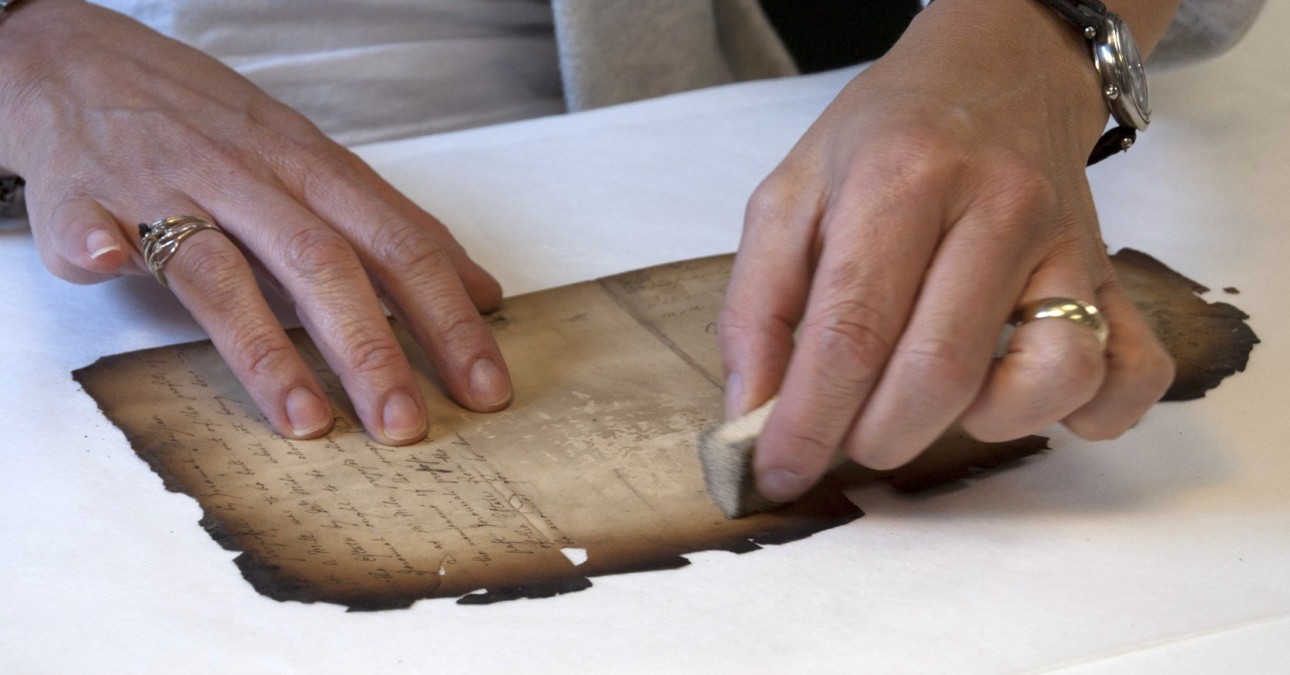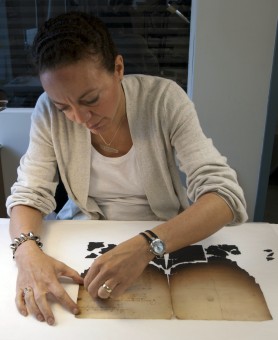
Treatment FOCUS: Fire-damaged Papers
In 1630, a Dutch diamond merchant named Killiaen van Rensselaer joined his country’s push for globalization and exploration and negotiated with the Mohican Indians for a tract of land in the Hudson River Valley of New Netherland (present-day New York State). His purchase founded the Manor of Rensselaerswijck, an arrangement in which the Van Rensselaer family held rights to the land and acquired tenants who paid them rent in commodities such as bushels of wheat, cider, and firewood. The settlement grew to hold about 10 farmers in 1634 and over 200 colonists comprising a full-grown society by 1652. The Manor survived mostly intact until the 1850s, when legal disputes with tenants—who objected to the feudalistic conditions of their leases—led to the estate’s decline.

Senior Conservation Assistant Jilliann Wilcox surface cleaning a manuscript
The New York State Library holds a collection of letters, contracts, accounts, maps, and other papers from the Manor, documenting over 200 years of business transactions, daily routines, and traditions. Many manuscripts were damaged in the New York State Capitol fire of 1911. Part of the collection received treatment at CCAHA in 2009 through a Save America’s Treasures grant. Senior Paper Conservator Soyeon Choi, Senior Conservation Assistant Jilliann Wilcox, and National Endowment for the Arts (NEA) Fellow Marion Verborg just began treatment (funded through the New Netherland Institute in Albany, NY) on an additional selection of fire-damaged papers.

NEA Fellow Marion Verborg and Senior Paper Conservator Soyeon Choi lining documents with toned mulberry tissue and wheat starch paste
Some paper supports appeared burnt only in the margins, while others burned to their innermost areas. The manuscripts also exhibited losses in the paper and media, surface soiling, and minor water stains. Many were folded, creased, and torn.
Choi, Wilcox, and Verborg are selectively surface cleaning each document to reduce surface dirt. They will then wash, line, humidify, and flatten each document. The manuscripts will be returned to the New York State Library in polyester film L-sleeves placed in alkaline folders, with folios stored opened for easy access to the information. Historians, genealogists, archaeologists, and lawyers researching land titles and Native American rights frequently use the collection, and land surveyors and title abstract firms still consult the remarkably accurate maps and surveys, which cover large parts of Albany and Rensselaer counties.
For more information on the manuscripts, visit the New York State Library’s online exhibit here.

